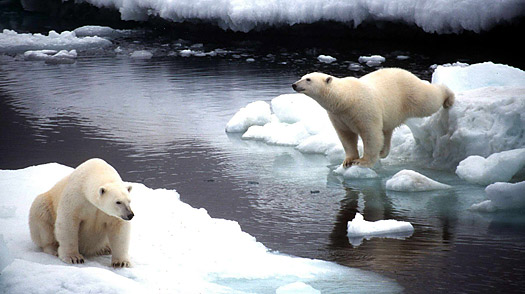
Some climate experts say that without breakthrough technologies and as yet unimagined solutions, we cannot stem the progress of climate change
The most recent estimates of global temperature rise by the end of the century may be incomplete and somewhat misleading, say scientists. The Intergovernmental Panel on Climate Change projects a likely rise of 4°C to 7°C by 2100 if we keep burning fossil fuels at the current furious rate. That suggests to some that the temperature may rise that high, then remain there indefinitely. But in fact, if we cut greenhouse-gas emissions early enough, it could begin to drop again. The difference in outcome between the two scenarios is vast. Imagine dropping an ice cube into boiling water for a second, then fishing it out: it will still be mostly intact. But if you leave the ice in for good — that is, if the global temperature stays high or rises even higher — that's a different story.
Another complication involves the way global temperature projections are calculated. They are not based solely on the impact of the heat-trapping greenhouse-gas emissions. They also reflect the effect of climate feedback systems that amplify or moderate warming — the melting of sea ice to reveal darker, heat-absorbing ocean below, for example, or the increase in clouds that can shield the planet from the sun's rays. But, says Daniel Lunt of the University of Bristol in England, "there are lots of processes that haven't been included at all."
In a paper in the current issue of Nature Geoscience, Lunt and several colleagues say these extra feedback systems — in particular, the melting of continental ice sheets and changes in vegetation — add 30% to 50% to standard temperature projections.
It isn't that climate scientists have been unaware of these extra effects; rather, it's that they play out over a longer time period than a mere century, so they are unlikely to have a major effect by 2100. Beyond that, adding them to computer models makes the models too slow and cumbersome. But researchers know they will eventually come into play, and Lunt and his colleagues aren't the first to try to figure out how. Two years ago, NASA climate scientist James Hansen published a paper saying that these slow feedbacks would double the standard projections — and that only by stabilizing atmospheric CO2 levels at 350 parts per million at most could we stave off disaster. (The level is currently closer to 390 p.p.m.)
That paper had its weaknesses, however, so Lunt and his colleagues did their own analysis. They peered back in time about 3 million years, to an era known as the mid-Pliocene warm period, when both CO2 and temperature were higher than today, as determined from fossilized plants and other evidence from lake and ocean sediments. Computer models that leave out slower feedbacks couldn't reproduce that ancient climate; models that include them did a lot better. "The main effects," Lunt says, "have to do with albedo" — that is, reflective power. In winter, tundra gets covered with snow, which reflects sunlight; as the climate warms, tundra is replaced by forest, which snow can't cover as easily. That's relevant in the modern era, since melting ice on Greenland and Antarctica will reveal darker rock, which absorbs the sun's heat.
How long will it take for these slower feedbacks to kick in? "We can't tell," says Lunt. "Our reconstructions of the mid-Pliocene are snapshots. They don't address how long it took temperatures to get there." Much will depend on how fast ice sheets melt away or slide into the sea. "That's the million-dollar question. Current models have Greenland melting in about 3,000 to 5,000 years. But we really don't understand ice sheets very well."
Indeed, Lunt is quick to say that his paper shouldn't be taken as the final word on the topic. "In climate science," he says, "there's never been a paper published that's been the final word." His point: it's only the gradual accumulation of knowledge by the community of climate scientists as a group that will ultimately reveal the truth about climate change.
Michael D. Lemonick is the senior science writer at Climate Central.